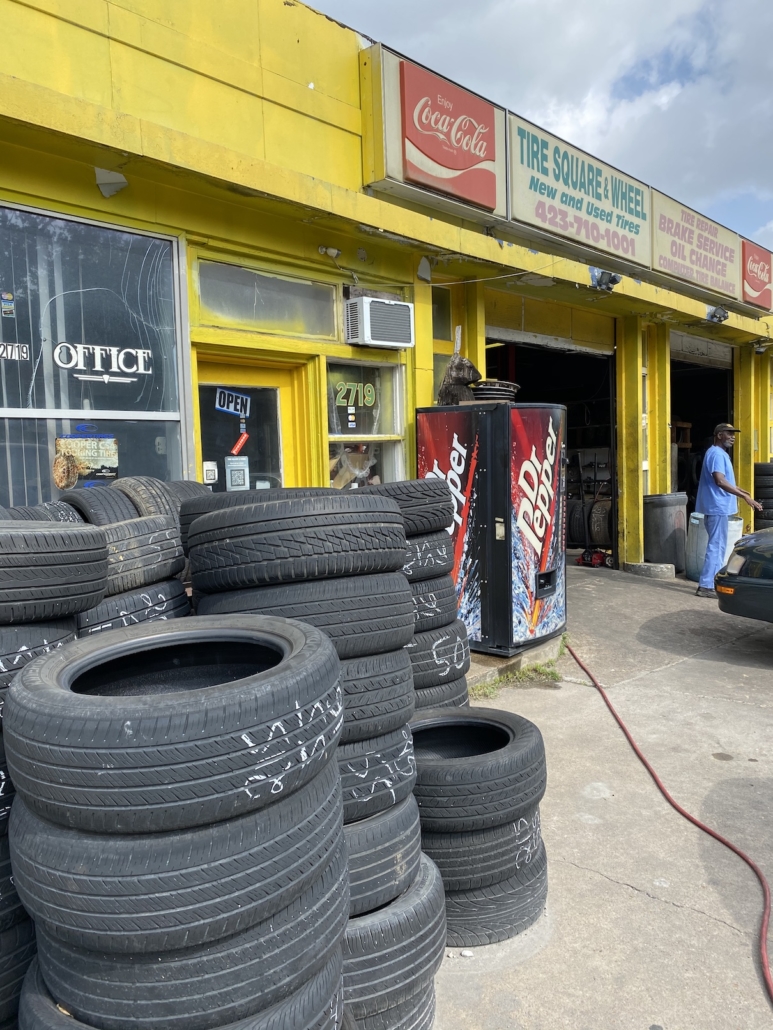
The Importance of Tire Service for Safe Driving
Making certain the safety of oneself and others on the road is vital when it comes to driving. One essential aspect that frequently goes ignored yet is essential for safe driving is tire maintenance. The condition of your tires can substantially influence your vehicle's performance and general safety. From tire pressure to walk depth, there are a number of crucial aspects to take into consideration when it involves tire solution. Overlooking these essential aspects can result in various risks while when traveling. Let's explore why tire service is a basic part of secure driving and just how it can make a substantial distinction in your general driving experience.
Tire Stress Maintenance
Preserving appropriate tire stress is crucial for guaranteeing ideal automobile performance and security when traveling. Ample tire stress not just enhances fuel efficiency but also extends the life expectancy of the tires, lowers the threat of accidents, and provides a smoother driving experience. When tires are underinflated, the contact patch-- the area where the tire meets the roadway-- rises, bring about too much warmth buildup and possible tire blowouts. Conversely, overinflated tires decrease the call spot, causing unequal tire wear and minimized traction.
To maintain the right tire stress, refer to the car supplier's suggestions commonly discovered in the proprietor's manual or on a sticker label located inside the motorist's side door jamb - gmc tire service. By focusing on tire pressure upkeep, drivers can promote more secure driving conditions and lengthen the life of their tires.
Tread Depth Examination
Proper tire stress not just enhances automobile efficiency but likewise impacts tread wear, making routine step depth evaluation crucial for safe driving. The walk deepness of a tire is crucial as it directly affects grip, specifically in snowy or damp problems. Not enough tread depth can cause lowered grasp on the road, enhancing the danger of crashes. To make certain optimal safety, chauffeurs must consistently examine their tire step depth using a tread depth gauge. The recommended minimum step depth is 2/32 of an inch; however, for improved performance, particularly in unfavorable weather, a walk depth of 4/32 of an inch or more is recommended. Unequal step wear can indicate alignment or suspension issues, even more underscoring the significance of regular tread deepness examination. By keeping ample step deepness, drivers can enhance their vehicle's handling, stopping, and total safety and security when driving. Keep in mind, risk-free driving starts with proper tire upkeep, consisting of routine step deepness checks.
Regular Tire Turnings
Routine tire turnings are necessary for extending the life-span of sites your tires and making sure optimal efficiency of your vehicle. By regularly turning your tires, you help disperse wear even more equally throughout all 4 tires. Front tires have a tendency to wear out a lot more quickly than back tires due to aspects like steering and stopping pressures. Rotating your tires at advised intervals, normally every 5,000 to 7,500 miles, can help stop irregular wear patterns, which can result in a smoother and more secure driving experience.

Value of Positioning Checks
Alignment checks play a critical role in making certain that the even use patterns attained through normal tire rotations are preserved for optimum vehicle efficiency and safety and security. When your car's wheels are not effectively aligned, it can lead to unequal tire wear, influencing handling and fuel effectiveness.
Additionally, proper placement boosts roadway grasp and security, specifically when driving in tough problems such as damp or icy roadways. By scheduling routine positioning checks, you can deal with any issues quickly, making certain that your vehicle operates at its ideal and promoting general security on the road.
Indications of Tire Put On
Keeping cautious observation of your tires' condition is paramount to ensuring secure and reliable driving practices. Among the vital elements to view out for is tire wear, as it directly influences the efficiency and security of your car. There are several indicators that suggest your tires may be breaking. Irregular walk wear across the tire surface area can suggest alignment concerns or improper inflation. Bulges, splits, or cuts on the sidewalls are red flags that the tire framework may be compromised. Step depth is also critical, and if it falls listed below 2/32 of an inch, it's time to replace the tires for optimal grip. In addition, vibrations, specifically at broadband, could suggest tire imbalance or various other problems. Consistently inspecting for these signs of tire wear and resolving them promptly with professional assessment and upkeep will not just extend the life of your tires however additionally improve your safety and security when traveling.
Verdict

From tire stress to step deepness, there are numerous vital variables to take into consideration when it comes to tire solution. When tires are underinflated, the call spot-- the area where the tire meets the Home Page road-- increases, leading to too much warmth build-up and prospective tire blowouts. By revolving your tires, you ensure that each tire puts on equally, preserving consistent grip (morris tires). Regularly checking for these signs of additional info tire wear and addressing them without delay via expert evaluation and maintenance will not just prolong the life of your tires however likewise enhance your safety and security on the roadway
Regular upkeep jobs such as keeping track of tire pressure, evaluating tread depth, turning tires, and examining alignment are important to ensure optimum performance and longevity of tires.